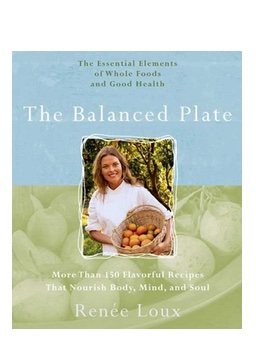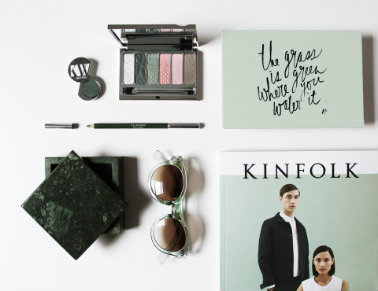Clean Air, Green Home
To keep a beautiful, clean, green home, keeping the air fresh and free of air-borne chemicals is a paramount priority. Here are five things you can do to cultivate clean air in your home.
Inhale. Exhale. The simple, essential act of breathing is something we do tens of thousands of times a day without thinking about it. Our breath literally inspires our body, delivering oxygen to release energy on a cellular level, removing CO2, energizing blood and circulation and setting in motion a complex series of systems that give us life.
It’s not hard to believe that the quality of the air we breathe has a massive impact on our health and wellbeing. However, it is hard to believe that in many cases indoor air is consistently more polluted that outdoor air (up to 10 times more), even in urban environments (1). The main culprit of indoor air pollution is a category of chemicals called VOCs (volatile organic compounds). You may relate VOCs to products like paint along with the wide availability of low-VOC and zero-VOC paint options currently on the market. But, VOCs are emitted by a huge array of products including household cleaning products, aerosol sprays and air fresheners, conventionally dry cleaned clothes, moth repellants, paint, treated wood, synthetic materials, plastic, upholstery, and carpet backing. Many, many of these materials populate our homes. If you’ve heard or used the term “off-gassing” that’s VOCs at work.
To keep a beautiful, clean, green home, keeping the air fresh and free of air-borne chemicals is a paramount priority. Here are five things you can do to cultivate clean air in your home:
Chemical cleaning products may be remarkably effective to leave a sparkle and shine, but most conventional products contain one or more of a trio of chemicals.
1. Choose natural and nontoxic cleaning products.
According to the Oxford English Dictionary, the word “clean” is defined as, “free from dirt, pollutants or harmful substances”. Conversely, most conventional cleaning products do, in fact, contain harmful substances and pollute both our homes and the environment.
When it comes to indoor air quality, household cleaning products can have a measurable impact for better or worse. Chemical cleaning products may be remarkably effective to leave a sparkle and shine, but most conventional products contain one or more of a trio of chemicals – most commonly ammonia, chlorine bleach, and chemical solvents (2). All are linked with a sliding scale of serious health and environmental effects and all are hazardous to breathe.
Here are some guidelines for choosing clean, green household products that will keep your home fresh and free of indoor pollutants:
• Look for full disclosure of ingredients on labels. Products that do not have a comprehensive list of ingredients are always suspect for harboring nasty chemicals.
• Look for products that explain ingredients such as “plant-based” surfactants or “natural” fragrances. The more description there is, the better.
• For a comprehensive guide and interactive database to finding safe, green cleaning products, visit the Environmental Working Group’s Guide to Healthy Cleaning.

2. Install a shower filter.
A shower filter is a simple way to improve indoor air quality by reducing chlorine vapors and as a bonus, keep your skin and hair from drying out.
Virtually all municipal water is chlorinated. So, unless you have your own well, the water coming out of your tap likely contains measurable amounts of chlorine. Chlorine is an effective disinfectant, but its toxic to breathe. It’s also very drying to skin and hair, and believe it or not, we actually absorb more chlorine by showering in chlorinated water than we do by drinking it (3)! When chlorinated water is sprayed (like in a hot, steamy shower), run through a faucet, or allowed to sit in a tub, much of the chlorine dissipates into the air contributing to indoor pollution. Even a basic shower filter will reduce or remove chlorine, which will not only improve indoor air quality, but will likely improve the luster of your skin and hair.
3. Choose natural air fresheners.
Who doesn’t love a fresh-smelling room? The difference between a fresh smell and a toxic chemical mist is a blurry line in the conventional air-freshening product world. Most air fresheners are laced with artificial perfumes – many of which are hazardous chemicals that can cause respiratory problems (4) and even cellular damage (5). Part of the riddle of decoding product labels is that “fragrance” can mean just about anything because a fragrance can contain as few as ten chemicals or as many as hundreds of them. Ninety-five percent of chemicals used in fragrances are synthetic petrochemicals (6) that are well-known toxins and sensitizers. Pthalates are among the most common for their ability to make smell stick around. They stick around, all right, but they are also linked with endocrine disruption (7), reproductive disorders (8) and cancer (9).
On the other side of the aisle, natural air-freshening products tap into the purifying power of plants and essential oil to resuscitate stale air in a nontoxic way. Consider an essential oil vaporizer or diffuser or reed sticks (long, thin sticks placed in a jar or vase filled with natural plant and essential oils) to generate a gentle, natural fragrance. Just be sure to choose products that have oils derived from plant sources and are free of artificial fragrances and perfumes. Red Flower makes some exquisite reed stick room diffusers using biodynamic-certified blends of plants and essential oils and palm wood stems in chic, recycled glass bottles with fragrances such as cardamom amber resin, cherry blossom, jasmine grandiflorum and orange blossom.
4. Bring in air-purifying houseplants.
Plants are perhaps the most sophisticated air-purification systems around. Not only do plants bring a soft serenity to a room, but they also wick away indoor air pollutants, remove carbon dioxide, reduce VOCs and produce fresh, clean oxygen. Plants even regulate healthy humidity levels and reduce airborne bacteria, mold and mildew. Literally any plant will clean the air though the most effective houseplants for purifying indoor air include bamboo palms, Chinese evergreens, chrysanthemums, English ivy, peace lilies, and philodendrons. For a great guide to more than two dozen superhero houseplants, including a 1-to-10 ranking of how effectively they clean the air, information on how to care for them, and how hard it is to kill them, pick up a copy of one of my plant-based cookbooks, The Balanced Plate.

5. Opt for eco-friendly dry cleaning.
How do your dry-cleaned clothes impact your home’s air quality? Traditional dry-cleaning employs some very nasty solvents that are extremely toxic. Perc (perchloroethylene) is the most commonly used dry-cleaning solvent and is linked to very health issues, even with low-level exposure. Clothes cleaned with chemical solvents may retain residues of those solvents that can release in your home and measurably contribute to indoor air pollution. To avoid exposing both your family and the ecosystem to these atrocious chemicals, seek out eco-friendly cleaning options such as “wet cleaning” or CO2 Cleaning, which use water or carbon dioxide as solvents instead of toxic chemicals.
(1) US Environmental Protection Agency. “Organic Gasses (Volatile Organic Compounds–VOCs).”
(2) Loux, R. Easy Green Living, Rodale Books 2008.
(3) Anderson, I. New Scientist September 1996.
(4) Lesinger, J.E. “Occupational Acute Anaphylactic Reaction to Assault by Perfume Spray.” Journal of the American Board of Family Practice 2001;14(2):137-140
(5) Griffiths, D.E. “Psi-screen, an in vitro toxicity test system: application in the bioassay of perfumes and fragrance chemicals.” Alternatives to Laboratory Animals 2005;33(5):471-486
(6) REprot by the Committee on Science and Technology. “Neurotoxins: At Home and in the Workplace.” U.S. House of Representatives, Sept 1986, Report 99-827
(7) National Institute of Environmental Health Services. “Endocrine Disruptors.” 2006
(8) Graham, S. “Ubiquitous Chemical Associated with Abnormal Human Reproductive Development.” Scientific America 2005
(9) Kleinsasser, N., et al “Genotoxicity of di-butyl-pthalate and di-iso-butyl-pthalate in human lymphocytes and mucosal cells.” Tertatogenesis, Cacinogenesis, and Mutagenesis 2001;21(3);189-196

Renée Loux is a chef, author, journalist, educator, entrepreneur, consultant, media personality and mother.
www.reneeloux.com








